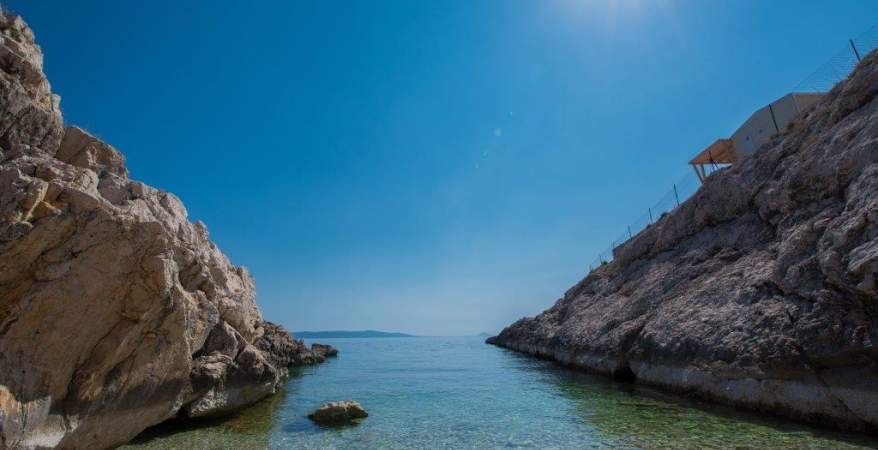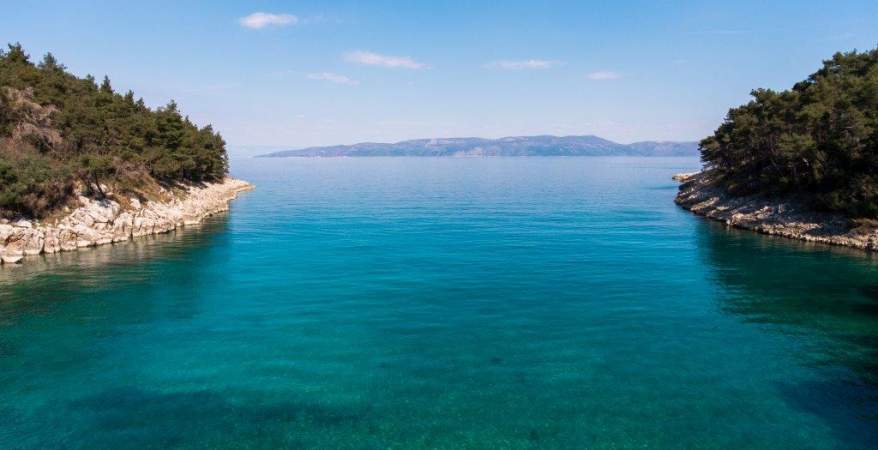St Marina
St. Marina is a picturesque seaside resort situated on the east coast of Istrian. A small peninsula covered in olive-groves and a church of St. Marina closes a quiet bay with a village and fertile valley in the bottom of it.
The oldest settlement traces were found in the surroundings of today’s Sv. Marina, including several Bronze Age hill forts and stone barrows. Appropriate strategic position, pleasant climate and fertile land caused Roman families to start settling here in the course of the 1st and 2nd century. One of the Roman objects was located on the southern part of the peninsula, on the spot where now stands the church of St. Marina.
A Roman villa rustica was built there, and its ruins were still visible at the beginning of the 20th century. Next to the villa on an unknown location there was a small necropolis (a cemetery), whose remains were discovered at the beginning of the last century. Several glass fragments found in the surroundings and a part of a window transenna (stone grille) which was part of an earlier church building belong to Late Antiquity and the Early Middle Ages.
The church of St. Marina was reconstructed in the 12th/13th century, when there was a medieval cemetery in its yard. The church serves as a proof of a medieval settlement whose traces are still to be discovered. According to a local tradition, there was once a nunnery near the church. The Venetian government has left us with no traces of its rule in Sv. Marina. It is assumed that the place was inhabited at that time and there was a small port in the bay. Sv. Marina began to flourish in the early 19th century when the whole of Labin area thanks to mining started to develop more intensively. Bigger and modern houses, covered in roofing tiles were built in Sv. Marina, and its inhabitants got engaged in trading and maritime affairs. At the beginning of the 20th century there were a shop, a café and a small police office (in order to prevent smuggling at sea) in Sv. Marina. A primary school with lessons in Croatian, started by St. Cyril and Methodius association, was working from 1905-1919.
After the war the village gradually started to die out, with part of its inhabitants leaving that time Yugoslavia or moving to larger cities, the school closed down, and the sailing boats were nationalized. The new revival took place in the early 1980s with the new industry-tourism. A camping site Marina was opened in 1981, with a capacity of 400 people, whereas now it can host 750 people. Sv. Marina today is all tourism-oriented, other than the camping site; there is also private accommodation available, cafés and restaurants, and a diving center within the camping site.












